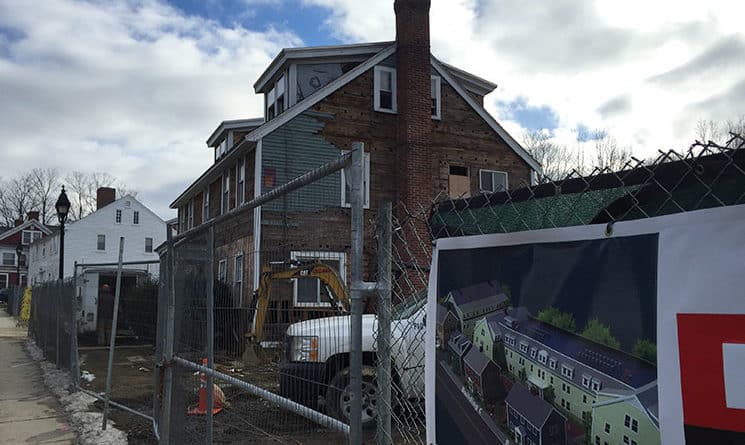Drive through downtown Durham during the week and, along with the usual pedestrians, skateboarders, and bicyclists, you may find yourself dodging dump trucks and waiting patiently behind cement mixers. A handful of large-scale student housing projects have turned the downtown into what seems like a massive construction project. The pace of that construction may soon slow down, though. The town council recently doubled the minimum required amount of habitable square-feet in new apartment units. It’s a move that town officials hope will temporarily halt a rapid increase in student housing developments.
On Monday, Dec. 1, the town council voted to increase the minimum habitable square-footage per occupant in an apartment that has unrelated occupants from 300 square feet to 600 square feet. That means apartment units will house fewer numbers of students — and, town officials hope, developers will hold off on new student housing projects. The change applies only to developments in downtown and does not affect single-family homes or duplexes.
Since 2008, when the town amended its zoning ordinances to make it easier for developers to construct student apartments in downtown, 14 student housing projects have added roughly 2,300 occupants to downtown, director of planning and community development Michael Behrendt says. That number includes projects currently under construction.
“I think there’s a general feeling in the community that we want to see these units get built, get absorbed, and see how the market responds … and just take a breather from new student housing for the near future,” Behrendt says.
That doesn’t mean student housing projects will stop, Behrendt added. And he hopes the change might encourage developers to consider other projects, including senior housing, workforce housing, and apartments for families.
“We want more of all that,” he says.
The town is also keeping an eye on enrollment at the University of New Hampshire. There are currently 14,761 students enrolled at UNH, and while Behrendt says that number is high compared to previous years, the university is projecting flat enrollment numbers for the next few years.
Town council chairman Jay Gooze says the new requirements will lead to more flexibility in terms of downtown housing units.
“Whether it’s 10 or 20 or 30 years from now, if the student population drops, we want to make sure that, at least at the moment, if something is built, it’s something that other people can use besides students,” he says.
The boom in student housing projects has helped increase the town’s tax base, Gooze says, and the new developments helped lure students out of houses and apartments in the neighborhoods surrounding the university and into downtown apartments.
But, as more students live downtown, that “means more pedestrians, more skateboards,” Gooze says, adding that town residents have expressed concerns that downtown was becoming a “university dormitory.”
“Everyone felt we needed to take a break for a few years … to let things settle out,” he says.

